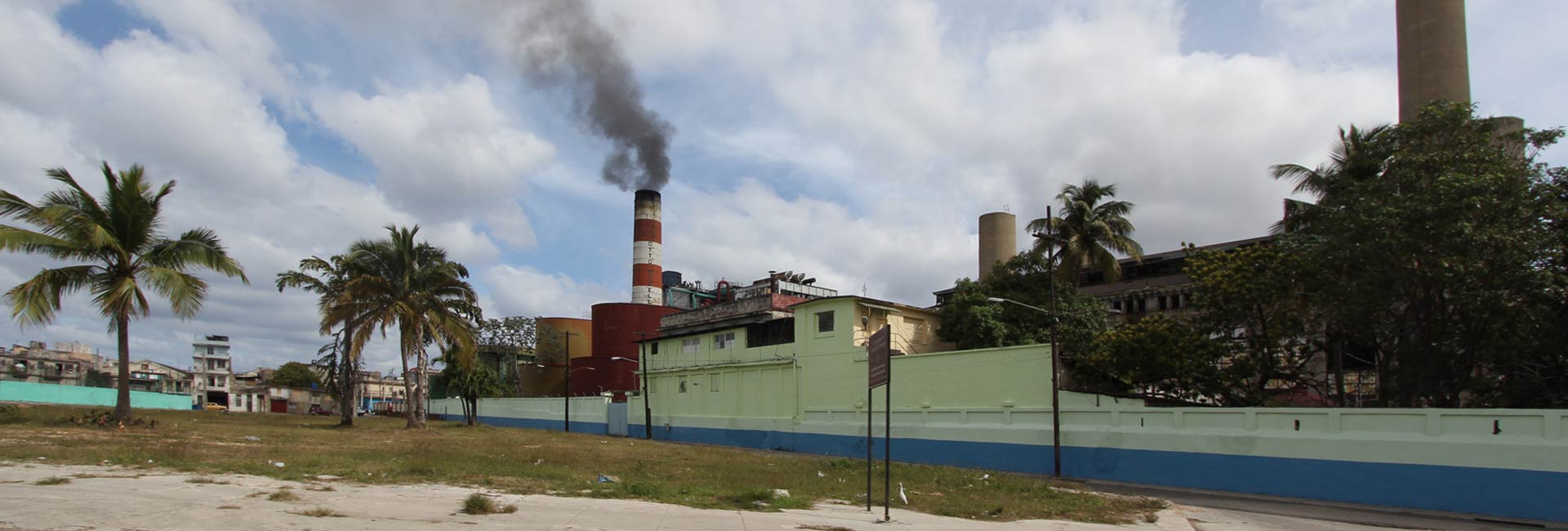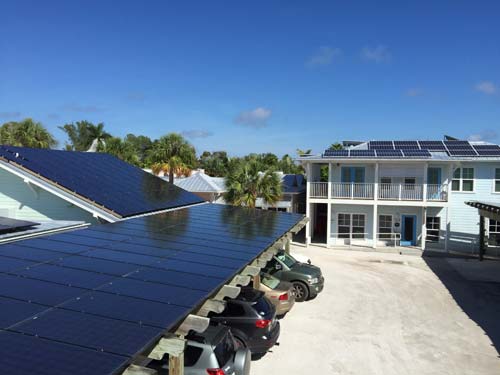

A College of Engineering faculty member begins modeling a Net Zero Energy Community for Cuba’s future energy infrastructure.
Cuba has been slowly but steadily moving toward an energy crisis for close to three decades, says Wangda Zuo, an assistant professor in the University of Miami College of Engineering’s Department of Civil, Architectural and Environmental Engineering.
Its dependence on foreign crude oil, combined with its own aging energy infrastructure, has left the island nation in critical need of new ways to meet its energy needs. But, says Zuo, Cuba is ideally positioned to develop a new energy infrastructure based on renewable energy sources.
Working with Raymond Kaiser, director of energy management systems at Amzur Technologies, and Stephen Welty, president of Calor Technologies, Zuo’s team is exploring options for Cuba’s future energy infrastructure. Specifically, Zuo’s research shows that Cuba may be able to create a new renewable energy infrastructure consisting of many Net Zero Energy Communities. These energy-efficient communities generate energy onsite from renewable resources in equal amount to their energy consumption on an annual basis. Net Zero Energy Communities have attracted international attention and can help combat global climate change.
About the Photo
An oil-burning power plant spews out smoke near central Havana, Cuba. Photo credit: Jessica M. Castillo
Join the Conversation:
Follow on
Twitter:
UM College of Engineering, @UMCoEDean
University of
Miami, @univmiami
UM News, @univmiaminews

To examine how Cuba might use Net Zero Energy Community principles, Zuo is using a virtual testbed for a net zero energy community based on the Historic Green Village in Anna Maria Island, Florida. The virtual testbed is a software environment that supports design, analysis and optimization of the energy systems in the Net Zero Energy Community. Zuo and his team selected the Historic Green Village because it is a real-life, Net Zero Energy Community with commercial and residential buildings. They are optimistic about the potential for Net Zero Energy Community principles to greatly improve Cuba’s energy infrastructure.
The Origins of Cuba’s Energy Crisis
Cuba’s energy crisis was first kindled in the 1990s by the loss of oil imports as a result of the collapse of the Soviet Union, its primary crude oil provider at the time. Initially, government efforts focused on reducing consumer demand by enforcing the phase-out of some of the nation’s most energy-inefficient culprits. Incandescent lighting, inefficient refrigerators, fans, air conditioning units, as well as kerosene and propane stoves were banned and replaced.
But demand was only half the equation, and Cuba continued to have serious problems with its supply. In July 2016, the Latin American Herald Tribune reported widespread power outages stemming from the nation’s aging electricity grid. Crude oil continues to be Cuba’s principal fuel, and its supply from Venezuela has been declining.
According to Zuo, Cuba has the potential to shift dramatically to a 100 percent renewable energy system. In doing so, it would create a system that could serve as a model for the future and become an economic export opportunity for Cuba.
What Does Cuba Bring to the Energy Table?
Cuba is well-situated to produce its own energy from renewable sources, Zuo says. Due primarily to its location, the nation has abundant wind and solar resources. The cost of offshore wind-power generation has decreased significantly and island-wide solar distribution infrastructure is already in place. However, formidable obstacles abound. Wind and solar are inherently variable—uncontrollable resources that pose an inevitable problem for grid operators who need to match electricity generation with demand on a minute-by-minute basis.
Zuo is using his Net Zero Energy Community virtual testbed to examine whether it might be possible to match wind and solar energy generation to demand in Cuba, and maintain safe, reliable and affordable energy distribution.
Development of a Virtual Testbed for Net Zero Energy Communities
Zuo is developing the virtual Net Zero Energy Community testbed based on the Historic Green Village. The village consists mainly of five mixed-use (retail, residential and office) commercial buildings. To satisfy the buildings’ energy demand, the village has three main renewable energy subsystems: solar PV (photovoltaic), geothermal system and solar thermal domestic hot water. Together with energy storage (batteries) and demand (buildings and appliances), they form a microgrid, which then interacts with the power grid. Microgrids are self-contained systems that are connected to the larger energy grid but can be self-sufficient if the grid fails. They add to grid stability and reliability—similar to the way backup generators add stability and reliability to energy consumption.
Click here to learn more about the Net Zero Energy Community in the Historic Green Village on Anna Maria Island.
So far, Zuo’s team has finished the first version of their virtual testbed. They did so using Modelica, an equation-based, object-oriented, cross-domain modeling language that has been applied in simulation research in many aspects of the building industry. In future work, they will use the virtual testbed to study the optimal operation of the zero-energy community and integration of the micro-grid to the power grid.
Filling in the Gaps for a Reliable Renewable Energy System
In order to use the inherently variable sources of solar and wind power, yet still keep energy flowing to meet demand, Cuba will require some type of backup power source. A recent study by the Lawrence Berkeley National Laboratory in California concluded that it is possible to create such a backup system through energy storage, flexible demand management and stand-by generators. In fact, the study found that these methods are flexible enough to react quickly, and at full capacity, to imminent, short-term needs—and are able to do so much more cost-effectively than traditional large fossil-fuel power plants.
The Historic Green Village’s microgrids utilize these sources, and show that microgrids are an important component in keeping Net Zero Energy systems reliable and stable. However, microgrids require sophisticated controls to predict energy resources and demand, and to manage energy storage and demand in real-time. Zuo’s team is working closely with Amzur Technologies and Oak Ridge National Laboratory in Tennessee to develop an open source, modular microgrid controller that can dynamically manage solar generation, energy storage and demand, grid integration and forecasting.
The virtual testbed Zuo’s team designed is useful not only for examining energy options for Cuba but it can also be easily modified for different needs. For instance, Zuo and his collaborators at Virginia Tech recently received a $1.4 million grant from the National Science Foundation to develop big data analytics for future smart, sustainable and connected communities. Zuo’s team will extend the virtual testbed to simulate the integrated networks of energy, transportation and communication for the optimal design of future smart communities.
- ANDI FUENTES / UM News
